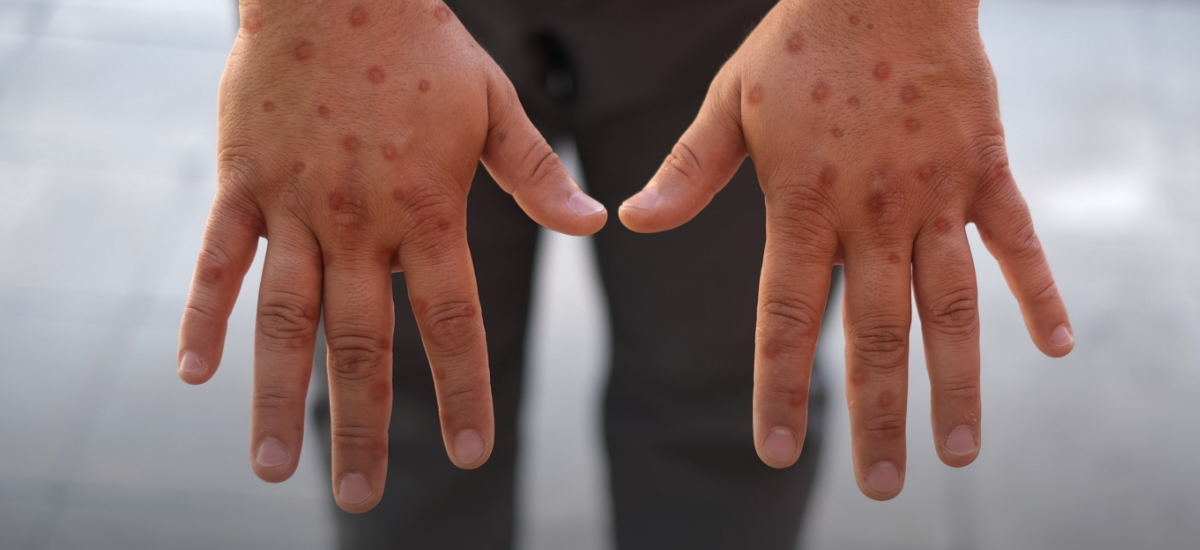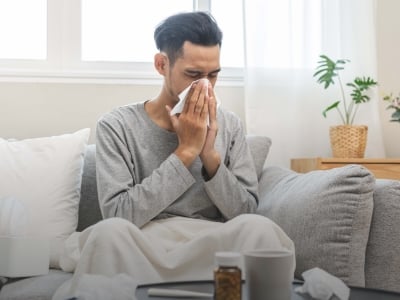Published on 22 September 2024
As mpox continues its global spread, staying informed is crucial. Here are the key facts that will help you understand the disease and safeguard yourself.
The World Health Organization (WHO) declared the current mpox outbreak a Public Health Emergency of International Concern (PHEIC) on 14 August. This was in response to a surge in mpox in the Democratic Republic of the Congo (DRC) and a growing number of affected countries across Africa. Here are some things to note about the disease:
1. Mpox originated in the Democratic Republic of the Congo in 1970.
Formerly known as monkeypox, mpox is caused by a virus from the poxvirus family, which also includes smallpox. The first recorded human case was a nine-month-old boy in the DRC in 1970.
Mpox primarily spreads through close contact, such as bodily fluids or respiratory secretions, and can also be transmitted via contaminated objects or surfaces. The virus can be passed from mother to foetus during pregnancy, or to a newborn during or after birth. It can also spread from animals to humans through bites, scratches, or the preparation of bush meat.
Mpox is endemic in Central and West Africa, where it is commonly found in these regions. The previous global outbreak – associated with the Clade IIb sub-variant – occurred in 2022, leading the WHO to declare it a public health emergency. Although the PHEIC status was lifted in May 2023, the current outbreak involves the Clade I sub-variant, which has been primarily noted for its predominant sexual transmission though sexual contact among humans.
2. Mpox cases in Singapore have been linked to the less dangerous Clade II sub-variant.
Mpox is classified into two sub-variants: Clade I, which is more severe, and Clade II, which is less dangerous. As of 22 August, the Ministry of Health (MOH) reported 13 mpox cases in Singapore this year, all of which were Clade II infections.
So far, the mpox outbreak remains largely confined to Africa, with two severe Clade I cases reported in Sweden and Thailand. Both cases involved individuals with a travel history to affected African countries. There have been no reports of local transmission in these two countries.
3. Mpox has been described as a more severe version of chickenpox.

Initial symptoms are like those of the flu, including fever, body aches and respiratory symptoms. A few days later, pox-like lesions begin to develop on the body. These start as flat sores that eventually form fluid-filled blisters. As the rash heals, the lesions crust over and fall off.
“An mpox boil is usually about five to ten times the size of a chickenpox boil (blister),” said Prof Hsu Li Yang, Vice Dean (Global Health) and Programme Leader (Infectious Diseases), NUS Saw Swee Hock School of Public Health (SSHSPH), “and it is usually itchy and painful.”
Symptoms usually appear within a week of infection but can take up to 21 days to develop.
4. There are no specific drugs approved to treat mpox.
Currently, patients receive treatment to prevent complications and manage their symptoms, such as medication for pain and fever. With time and rest, most patients recover on their own. Recovery takes up to a month, during which, the person remains infectious.
In cases of severe disease, antivirals such as Tecovirimat will be prescribed for treatment. This approach aligns with the practices of other public health agencies, MOH has said.
5. Most people with mpox recover with time and proper care.
While the Clade I sub-variant tends to cause more severe illness than Clade II, most individuals recover within two to four weeks. Those who are at higher risk of severe illness include children, people who are pregnant, and immunocompromised individuals, such as those with poorly controlled HIV.
“In Singapore, someone with mpox would be kept in hospital, isolated until all the boils have disappeared before they are allowed to return home,” said Prof Hsu. Additionally, the current advice is to abstain from sexual intercourse for about two months after recovery because the virus has been found in the semen of men who have recovered from mpox for over a month after recovery.
“In severe cases, complications such as pneumonia, infections that can threaten vision, severe blood infections, and brain inflammation may occur,” said Prof Hsu. “The disease can be fatal in some instances, but these cases are rare.”
6. Mass vaccination against mpox is not recommended at this time.
A third-generation smallpox vaccine, known as MVA-BN (JYNNEOS), is available for individuals identified as close contracts of mpox cases. While JYNNEOS is estimated to offer more than 80 per cent protection against mpox, data on the level and duration of protection remain limited.
Following international recommendations, mass vaccination for the general population is not advisable as a strategy for preventing mpox currently.
7. A major mpox outbreak in Singapore is unlikely.
Prof Hsu explained that MOH has been closely monitoring the situation by surveying affected countries and staying updated on the latest developments. “Doctors in the healthcare system have also been informed to look out for cases of mpox,” said Prof Hsu. He added that Singapore is unlikely to experience a major mpox outbreak.
Despite the low risk, MOH is offering the JYNNEOS mpox vaccine for free to healthcare workers who are at the highest risk of exposure to the disease – such as those working at the National Centre for Infectious Diseases – and close contacts of confirmed cases. The latter group will also be subjected to a 21-day quarantine, during which they will be offered one dose of JYNNEOS within 14 days of exposure to the virus.
In a press conference on 4 September, Health Minister Ong Ye Kung described the mpox virus as “troublesome”, but one that Singapore can manage. There is currently no need for mask-wearing.
To ensure safety, MOH has implemented screening measures at airports and sea checkpoints. These proactive steps are designed to protect you and effectively manage any potential risks.
In consultation with Prof Hsu Li Yang, Vice Dean (Global Health) and Programme Leader (Infectious Diseases), SSHSPH.




